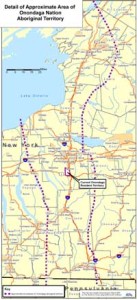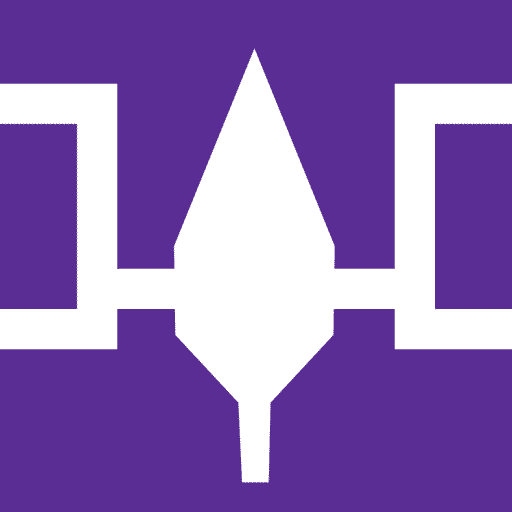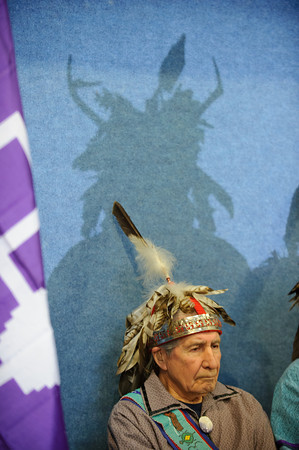
Mapping Sovereignty: A Traveler’s Guide to Finding Authentic Onondaga Nation Maps
Forget the typical souvenir hunt. Some journeys aren’t about trinkets, but about tangible connections to history, sovereignty, and profound cultural narratives. For the discerning traveler and history enthusiast, seeking out authentic maps related to the Onondaga Nation is one such quest. This isn’t just about acquiring a piece of paper; it’s about holding a fragment of a living history, an indigenous perspective on land, treaties, and identity that predates and often contradicts colonial narratives.
Central New York, the ancestral and contemporary home of the Onondaga Nation, a central fire of the Haudenosaunee (Iroquois) Confederacy, is where this unique exploration begins. My aim here is to guide you directly to the heart of this pursuit, offering insights into where to look, what to seek, and how to engage respectfully with a quest that transcends mere cartography.
Why Authentic Onondaga Nation Maps Matter

Before we delve into locations, it’s crucial to understand the profound significance of these maps. For the Onondaga, maps are not merely geographical representations; they are historical documents, statements of sovereignty, and visual narratives of their enduring relationship with their ancestral lands, or Onondaga Nation Territory.
Colonial maps often depict a land waiting to be "discovered" or "claimed," erasing indigenous presence. Authentic Onondaga maps, or maps created with Indigenous perspectives and input, tell a different story. They illustrate traditional hunting grounds, spiritual sites, treaty boundaries (often broken), and the vastness of the Haudenosaunee Confederacy’s influence long before European arrival. They are critical tools for understanding land claims, treaty rights, and the ongoing struggle for self-determination.
These maps might range from reproductions of historical documents—like early colonial maps that nonetheless show Onondaga place names or treaty lines—to contemporary cartography produced by the Nation itself, depicting current landholdings, cultural sites, or educational interpretations of their history. The authenticity lies in their provenance, accuracy, and the narrative they convey.
The Quest Begins: Immersing in Onondaga Territory

The most direct and respectful path to understanding and potentially acquiring maps related to the Onondaga Nation involves visiting the region they call home. This journey is as much about cultural immersion as it is about acquisition.
1. The Onondaga Nation Territory Itself: The Primary Source of Knowledge
- Location: South of Syracuse, New York. The Onondaga Nation is a sovereign territory.
- The Experience: This is not a retail district, but a vibrant, living community. Approaching the Nation’s territory requires respect and understanding. While there might not be a dedicated "map shop," the Onondaga Nation is the ultimate source of knowledge about their land and history.
- What to Look For: Start with official channels. The Onondaga Nation may have a cultural center, administrative offices, or a historical preservation department that produces or endorses maps for educational purposes. These are the most authentic you can find, directly from the source. They might be contemporary maps showing current boundaries, or educational materials illustrating historical territories.
- Engagement: The key here is respectful inquiry. If you are interested in historical maps or contemporary geographical representations, contact the Nation’s leadership or cultural representatives before visiting. Inquire about their protocols for visitors and any available resources. This demonstrates respect for their sovereignty and cultural practices. Direct purchases might be limited, but the educational value and potential for guidance are unparalleled. Look for opportunities to support Nation-run initiatives or businesses, as this directly benefits the community. Always adhere to any posted rules or guidelines within the territory.

2. Regional Museums and Historical Societies: Curated Authenticity
- Location: Syracuse, NY, and surrounding Central New York towns.
- The Experience: These institutions often serve as vital repositories of regional history, including that of the Onondaga Nation. They provide a more formal, academic setting for research and discovery.
- What to Look For:
- Onondaga Historical Association (Syracuse, NY): This is a prime location. The OHA has extensive collections related to Syracuse and Onondaga County history, which inherently includes the Onondaga Nation. Their gift shop might carry reproductions of historical maps, books featuring detailed cartography, or educational materials that include accurate maps of Haudenosaunee territories. Their archives might also hold original documents you can view for research purposes.
- Everson Museum of Art (Syracuse, NY): While primarily an art museum, the Everson occasionally features exhibits related to local history and Indigenous art, which might include maps or cartographically-inspired works. Their museum shop is another potential source for quality reproductions or related publications.
- Other Local Historical Societies: Smaller town historical societies in counties like Onondaga, Madison, or Cayuga might also hold maps or documents depicting regional land use and settlement patterns, often interacting with Onondaga territories. These are less likely to have "authentic Onondaga maps" per se, but more likely to have colonial maps that depict Onondaga lands, offering a comparative historical perspective.
- Engagement: Museum staff and archivists are invaluable resources. Explain your specific interest in Onondaga Nation maps. They can guide you to relevant collections, provide context, and recommend reputable publications or reproductions.

3. Specialized Antique Map Dealers and Rare Book Shops: The Treasure Hunt with Caveats
- Location: Larger cities in New York State (e.g., Syracuse, Rochester, Albany, or even NYC for broader regional dealers) and online.
- The Experience: This is where the thrill of the hunt meets the necessity of due diligence. You’re looking for original historical maps, which carry significant historical weight and value.
- What to Look For:
- Early American Maps: Look for maps from the 17th, 18th, and 19th centuries that depict New York State or the Great Lakes region. These maps often show "Iroquois Lands," "Onondaga Territory," or specific treaty lines. Examples might include maps by early cartographers like John Montresor, Claude Joseph Sauthier, or later state surveyors.
- Treaty Maps: Maps specifically drawn to delineate treaty boundaries between Indigenous Nations and colonial governments are incredibly significant. While often reflecting colonial perspectives, they are direct historical artifacts of interaction.
- Haudenosaunee Influence: Look for maps that explicitly name Onondaga villages, paths, or hunting grounds. Pay attention to how Indigenous territories are represented—are they blank spaces, or are they detailed with indigenous place names?
- Caveats:
- Authentication: Authenticity is paramount. Reputable dealers will provide detailed provenance (the history of ownership) and expert appraisal. Be wary of sellers who cannot provide this.
- Reproduction vs. Original: Be clear about whether you are buying an original, a high-quality reproduction, or a print. Originals are significantly more expensive and require specialized care.
- Colonial Bias: Understand that most early maps were created by European cartographers from a colonial perspective. While historically valuable, they do not necessarily reflect the Onondaga Nation’s own view of their territory or sovereignty. It’s important to contextualize these maps.
- Engagement: Build a relationship with reputable dealers. They often have deep knowledge and can source specific types of maps. Ask probing questions about the map’s origin, historical context, and any known history of the piece.
4. Online Resources: Accessibility with Caution
- Location: Websites of academic institutions, specialized map dealers, and potentially the Onondaga Nation itself.
- The Experience: The internet offers unparalleled access to vast archives and dealers, but also presents challenges in verifying authenticity.
- What to Look For:
- Official Onondaga Nation Websites: If the Nation has an official online store or resource center, this is a prime, trusted source for contemporary maps or endorsed reproductions.
- University Archives and Digital Collections: Institutions like Cornell University, Syracuse University, or the Library of Congress often have digitized collections of historical maps relevant to New York State and Indigenous history. While not for purchase, these are invaluable for research and identification of authentic map styles.
- Reputable Online Map Dealers: Websites of established antique map dealers with physical storefronts are generally trustworthy. They often have high-resolution images, detailed descriptions, and return policies.
- Academic Presses: University presses (e.g., Syracuse University Press, Cornell University Press) publish books on Haudenosaunee history that often include meticulously researched and reproduced maps.
- Caveats: Be extremely cautious of auction sites or general e-commerce platforms unless the seller has impeccable credentials and a clear, verifiable history of selling authentic historical items. Scrutinize descriptions, images, and seller reviews.
What to Look for in an "Authentic" Onondaga Nation Map (or related maps)
When you’re evaluating a map, consider these aspects to gauge its authenticity and significance:
- Provenance: Who created it? When? Where did it come from? A clear chain of ownership or creation from the Onondaga Nation, a respected historian, or a reputable colonial cartographer adds immense value.
- Indigenous Perspective: Does the map reflect Onondaga or Haudenosaunee understandings of land, or is it solely a colonial interpretation? Maps produced by or in consultation with the Nation are ideal. For historical colonial maps, understand their inherent biases while appreciating their historical artifact status.
- Content Accuracy: Does it accurately depict traditional territories, known village sites, treaty lines (as understood by the Nation, if possible), or significant geographical features relevant to Onondaga history?
- Material and Condition: For original antique maps, the type of paper, printing method, and any original hand-coloring are important indicators. Condition significantly affects value. For reproductions, look for high-quality printing on archival paper.
- Cultural Context: Does the map include elements like wampum belt designs, representations of the Great Law of Peace, or other cultural symbols that connect it directly to Onondaga identity? This is more likely in contemporary, Nation-produced maps.
The Experience: More Than a Purchase
Seeking an authentic Onondaga Nation map is a journey of discovery that transcends a simple transaction. It is an opportunity to:
- Learn Directly: Engage with the history and culture of the Onondaga Nation. This might mean visiting cultural centers, attending public events (if available and appropriate), or simply reading extensively from Indigenous authors and historians.
- Support Sovereignty: When you acquire a map directly from the Onondaga Nation or a business they endorse, you are directly supporting their community and cultural preservation efforts.
- Connect with Land: The physical act of traveling to Central New York and exploring the landscape around Onondaga territory provides a deeper appreciation for the land itself and its enduring significance to the Nation.
- Become a Steward: Owning such a map comes with a responsibility to understand its history, share its story respectfully, and preserve it for future generations.
Practical Tips for Your Journey
- Research Thoroughly: Before you go, research the Onondaga Nation, their history, current events, and any protocols for visitors.
- Plan Your Itinerary: Identify specific museums, historical societies, or reputable dealers you wish to visit.
- Contact Ahead: For institutions or particularly sensitive areas (like the Nation’s territory), call or email in advance to ascertain visiting hours, specific collections, and any necessary permissions or appointments.
- Be Patient: Finding a truly authentic or significant map can take time. It’s part of the adventure.
- Be Respectful: Always approach Indigenous communities, their history, and their cultural artifacts with the utmost respect and humility. Remember that you are a guest on their ancestral lands.
- Budget Appropriately: Authentic antique maps can be very expensive. High-quality reproductions or contemporary maps from the Nation will be more accessible.
Conclusion: A Map to Understanding
The quest to buy authentic Onondaga Nation maps is not merely about adding a unique item to your collection. It is an educational pilgrimage, a respectful engagement with a profound history, and an act of recognizing enduring Indigenous sovereignty. By seeking out these maps, you are not just tracing lines on a page; you are tracing the very fabric of a Nation’s identity, its struggles, and its resilience.
When you hold such a map, you hold a piece of living history—a testament to the Onondaga Nation’s enduring presence and their deep, unbreakable connection to their ancestral lands. It’s a reminder that history is not just in books, but in the land, in the stories, and in the maps that guide us to a deeper understanding of our shared world. So, embark on this journey with an open mind and a respectful heart, and let these maps guide you to a more profound appreciation of the Onondaga Nation’s legacy.
